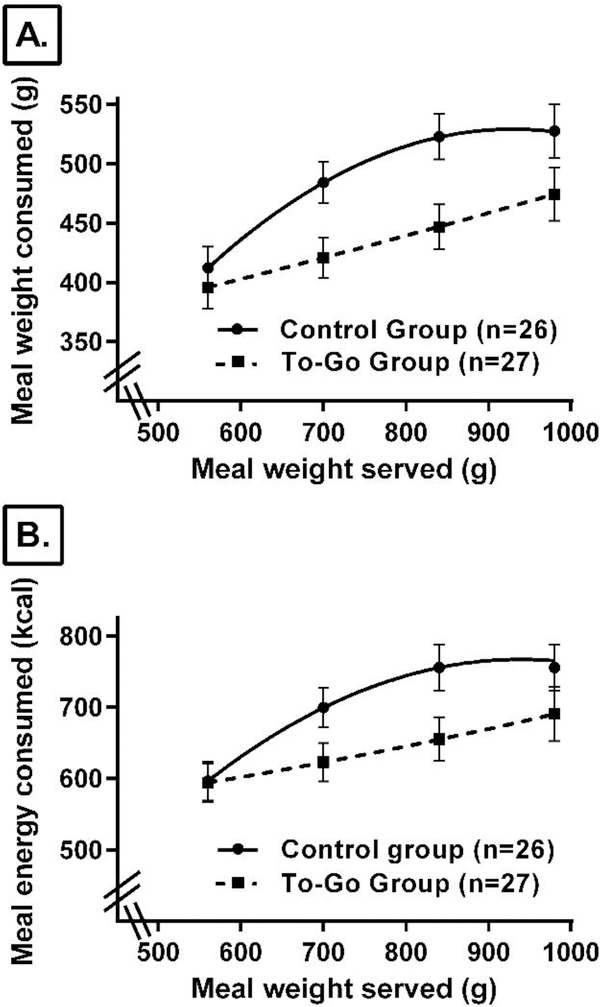Figure 3:
Comparison of the portion size effect (PSE), defined as the trajectory of intake in response to increasing portion sizes of a meal, between women who were provided the opportunity to take away uneaten food (To-Go Group) and those who were not (Control Group). For women in the Control Group, there was a significant PSE on food (3A) and energy (3B) intake. For every 100 g increase in the weight of food served beyond baseline amounts, intake increased by 64±12 g (90±19 kcal) until levelling off. In contrast, the effects of portion size on food (3A) and energy (3B) intake were attenuated for women in the To-Go Group. For every 100 g increase in the weight of food served beyond baseline amounts, intake increased by only 17±12 g (19±18 kcal). (Reprinted from Appetite, 129, Zuraikat, F.M., Roe, L.S., Smethers, A.D., & Rolls, B.J., Doggy bags and downsizing: Packaging uneaten food to go after a meal attenuates the portion size effect in women, 162–170, 2018, with permission from Elsevier for noncommercial use).

